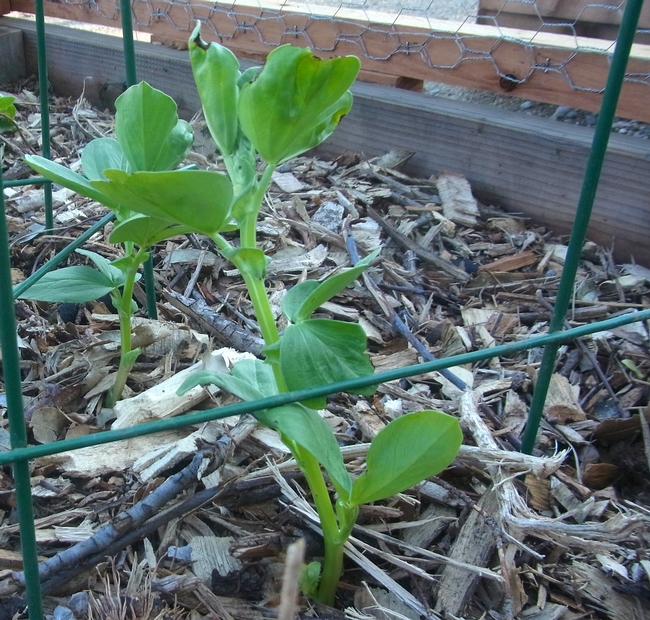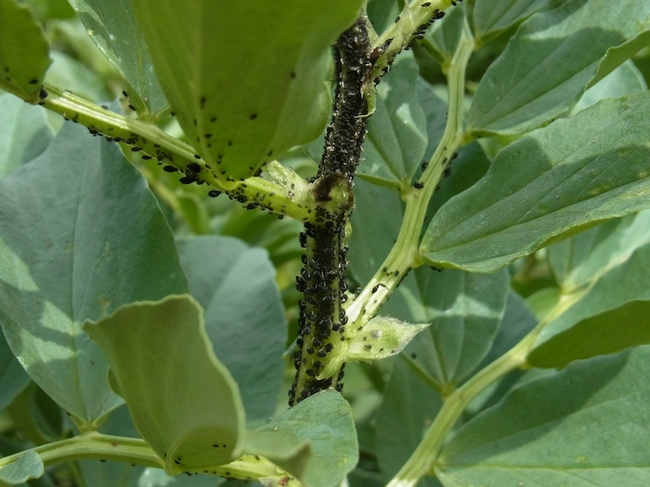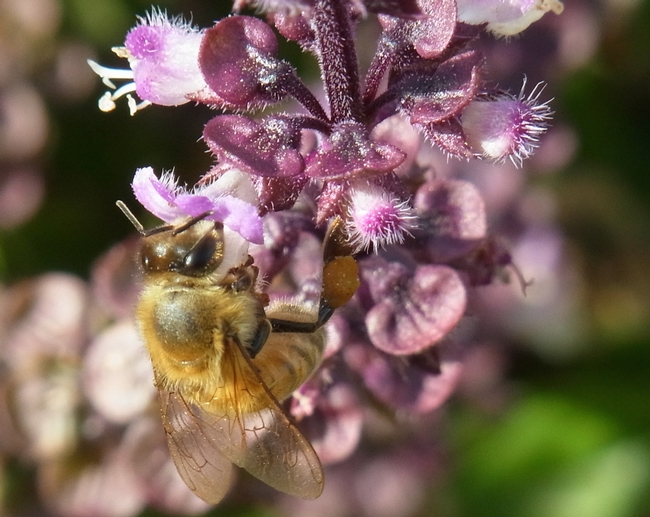Central California's mild winters mean we can grow our state's specialty crops year-round. Tasty, nutritious, and easily-grown, fava beans are a winter crop that feeds both us and honey bees. Favas, like the honey bees that pollinate them, are native to the Mediterranean region. Since honey bees are active when it's sunny and temperatures are above 55 degrees, there will be ample pollination in our mild winters. Recent research by Bishop et. al (Agriculture, Ecosystems & Environment; 2016. 220:89-96) suggests that fava plants become more dependent on insect pollination as temperatures increase. Thus bee pollination may play an increasingly important role in production of this crop as our climate changes.
How to grow: Fava plants may be found at some garden centers, but it's much easier to locate and purchase seeds. They germinate quickly and are also a great project for children who are learning to garden. If started now, beans should be ready to harvest in February or March; you'll also find them at farmer's markets at that time. 
Pests: Bean aphids (Aphis fabae) may infest fava beans as they mature. These do not affect yield; wash these off with water. UC IPM has more detailed information on biology and management guidlines.
Nutrition and recipes: Fava beans (Vicia faba) are full of nutrients and a great source of fiber and lean protein. Favas may be eaten raw by taking them out of the pod and removing the outer coating, otherwise they should be cooked. This recipe for fava bean pesto from the Food Network utilizes basil, another great, easy-to-grow bee plant. 

The UC Cooperative Extension Small Farms Program has a page on favas with more information about growing, nutrients, and economics. Both basil and fava beans are important to the state's specialty crop economy. California leads the US in herb production, and in coastal California, which is the center of the state's fava production, the San Mateo County fava bean crop was valued at $1.8M in 2015 (California Agricultural Statistics Review, 2015).
Cautions: fava beans contain oxalic acid, a naturally-occurring substance found in some vegetables. It may crystallize as oxalate stones in the urinary tract in some people, so anyone with known oxalate urinary tract stones should avoid fava beans.
Favism is a rare inherited disorder most common in people of southern European origin. They have an enzyme deficiency that causes a reaction when they eat fava beans are eaten or are exposed to fava pollen. They may develop hepatitis or flu-like symptoms.